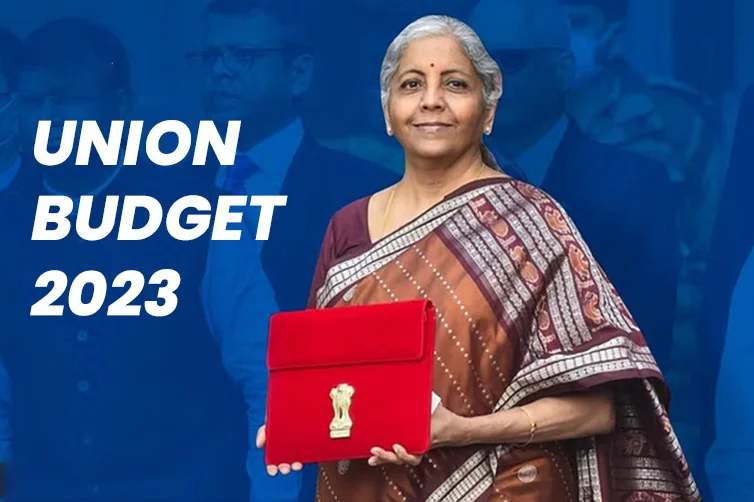
Every year on the 1st of February, Finance Minister Nirmala Sitharaman reads out loud the union budget in the parliament. This year, keeping in consideration the paperless budget, Sitharaman used a tablet to mention the key highlights of the budget in the parliament.
The primary focus aka vision:
Promoting India towards a more technology-driven and knowledge-based economy with strong public finances, and a robust financial sector. To achieve this, Jan Bhagidari through Sabka Saath Sabka Prayas is essential. The Economic Agenda to achieve this focuses on 3 things: (a) Facilitating ample opportunities for citizens, especially the youth, to fulfil their aspirations; (b) Providing strong impetus to growth and job creation; (c) Strengthening macroeconomic stability.
Key Highlights:
1. For Startups

Tax Holiday Date Revision
Startups in India enjoy a “tax holiday”, where they don’t pay taxes for the first 3 years of incorporation. Until now, any startup incorporated before 31st March 2023 could avail of this tax holiday benefit.
Implication: The Budget 2023 extended this date by one year, meaning a startup incorporated before 31st March 2024 can also enjoy the benefits of a tax holiday!
Carry Forward & Set Off Losses: Until now, startups were allowed to carry forward and set off losses if such a loss has been incurred for 7 years since incorporation. The new Budget has extended it to 10 years since incorporation.
Implication: Startups can “carry forward and set off losses”, meaning losses from any source can be set off against profit from another source and can be carried forward to future financial years.
Loss can be adjusted against taxable income, bringing the final payable tax amount lower and offering relief to the business.
2. The IT industry

Data Accessibility: In a bid to help bring innovation to the IT sector at a much faster pace, the Budget 2023 emphasised the power of data accessibility.
Budget 2023 introduced the National Data Governance Policy, which will create a large repository of Indian datasets.
This data could be from the government or private entities and will be made accessible to the research and startup ecosystem to enable innovation.
The National Data Governance Policy also focuses on promoting transparency, accountability, and ownership in non-personal data and dataset access.
3. For all Businesses

COVID-19 Relief
In Budget 2023, MSMEs that were not able to execute contracts during COVID will get a 95% return of the forfeited amount related to bid or security by government and government undertakings.
This will provide relief to Micro, Small, and Medium Enterprises that were affected by the pandemic.
Credit Guarantee Scheme Revamp
The credit guarantee scheme is also being revamped – this scheme was introduced to provide collateral-free loans to MSMEs.
The revamped scheme will enable collateral-free guaranteed credit of up to Rs 2 lakh crore and will reduce the cost of credit to about 1%.
4. Agriculture of the country

The Budget 2023 also focused heavily on the importance of implementing technology into agriculture.
The agri-tech industry and startups surrounding it will be supported with new digital public infrastructure.
This will enable “inclusive, farmer-centric solutions for crop planning, credit, insurance, crop estimation, and market intelligence.”
An agriculture accelerator fund is also going to be set up for agri-startups in rural areas.
5. For Digital India

This new Budget introduced a Digilocker for MSMEs and big businesses, called the Entity Digilocker – a service enjoyed only by retail customers until now.
The Budget also included continued support for digital payments and digital public infrastructure. It was pointed out that digital payment transactions increased by 76% in 2022.
6. Taxation

Presumptive Taxation
With the Budget 2023, MSMEs with a turnover of up to Rs 3 crore and professionals with a turnover of up to Rs 75 lakh – with cash receipts of no more than 5% can avail of the “presumptive taxation” benefit.
Presumptive taxation is when a taxpayer is exempt from maintaining books of accounts. This offers relief to small taxpayers who find it difficult to maintain books of accounts.
TDS Rate Chart for AY 2023-24
Another change made was to TDS: the TDS rate on the taxable part of withdrawals made from EPF was 30% but has been cut to 20%.
The minimum threshold for TDS which was Rs 10,000 has been removed
7. Income Tax

The biggest news of the Budget 2023 was the change to the income tax rebate limit.
Previously, people who earned less than Rs 5 lakhs were exempt from paying taxes. Now, that limit has been increased to Rs 7 lakhs.
The new tax regime has now been made the default option when filing tax returns.
Here is the revised tax slab for FY 2023-24
Income Tax Slab FY 2023-24
| Income | Tax Rate |
| Rs 0 – 3,00,000 | 0% |
| Rs 3,00,001 to Rs 6,00,000 | 5% |
| Rs 6,00,001 to Rs 9,00,000 | 10% |
| Rs 9,00,001 to Rs 12,00,000 | 15% |
| Rs 12,00,001 to Rs 15,00,000 | 20% |
| Rs 15,00,001 onwards | 30% |